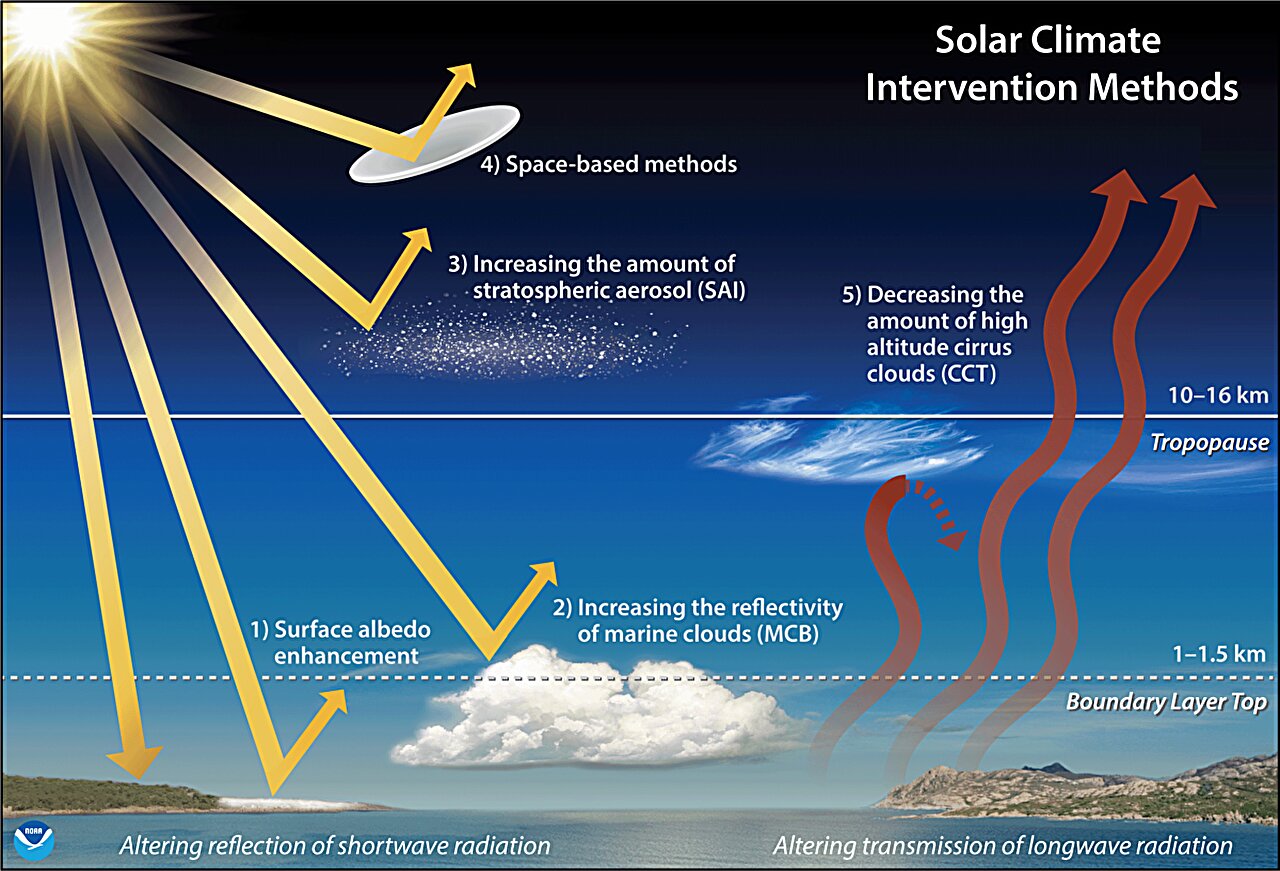Context:
A study recently published in the journal Earth’s Future offered an innovative approach to Stratospheric Aerosol Injection (SAI) — a controversial technique where tiny reflective particles (aerosols) are released into the upper atmosphere to reflect sunlight. The approach could reduce surface temperatures that could reduce its costs but also bring it closer to fruition despite the opposition to it.
What is Stratospheric Aerosol Injection (SAI)?
- Stratospheric Aerosol Injection or SAI is inspired by volcanic eruptions, such as Mount Pinatubo’s 1991 eruption, which cooled the planet by emitting aerosols into the stratosphere.
- The idea is to mimic this natural cooling effect using aircraft to inject sulphur dioxide (SO₂) into the stratosphere. These particles reflect solar radiation, lowering global temperatures.
A New Approach:
- Traditionally, SAI has been studied for injection at high altitudes (around 20 km), especially near the equator where such techniques are most effective. However, high-altitude injection requires specially designed aircraft — expensive and time-consuming to develop.
- A new study published in Earth’s Future explores a lower-altitude strategy using existing aircraft modified with insulated, pressurised tanks. These jets would inject aerosols at 13 km altitude, especially over polar and extratropical regions where the stratosphere is lower and easier to reach.
Key Findings:
Using the UK Earth System Model (UKESM1), the researchers simulated various injection scenarios. They found that:
· Injecting 12 million tonnes of SO₂ annually at 13 km could cool the planet by ~0.6º C.
· To cool by 1º C, 21 million tonnes per year would be needed at that altitude.
· If aerosols are injected higher, in the subtropics, only 7.6 million tonnes would be required for the same cooling.
This suggests low-altitude SAI is more accessible but less efficient, needing larger quantities of aerosols.
Risks and Concerns:
While the approach is faster and cheaper, it raises serious concerns:
· Environmental Risks: Higher sulphur dioxide levels may worsen acid rain, delay ozone recovery, and trigger other unknown side effects.
· Geopolitical Risks: Since SAI affects the entire planet, any one country’s actions could impact others — potentially causing international tensions.
· Moral Hazard: Temporary cooling could reduce the pressure to cut emissions, masking the underlying climate crisis.
Moreover, the cooling would be more effective in the polar regions, while the tropics, which face the worst warming, may not benefit as much.
Conclusion:
Stratospheric Aerosol Injection offers a technically feasible and relatively low-cost way to cool the Earth temporarily. But the risks, uneven effects, and lack of global governance make it a highly controversial tool. While the new approach could fast-track deployment, it should not replace the urgent need to reduce emissions.







